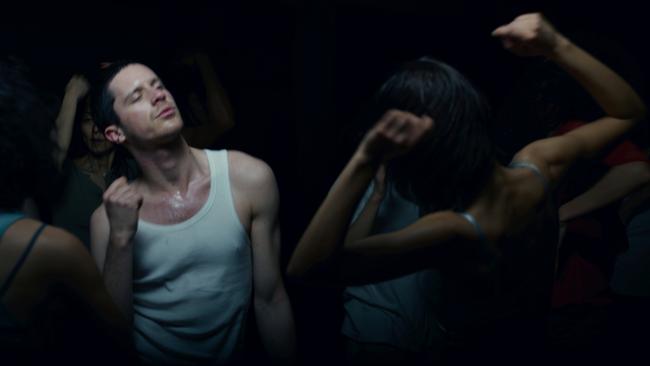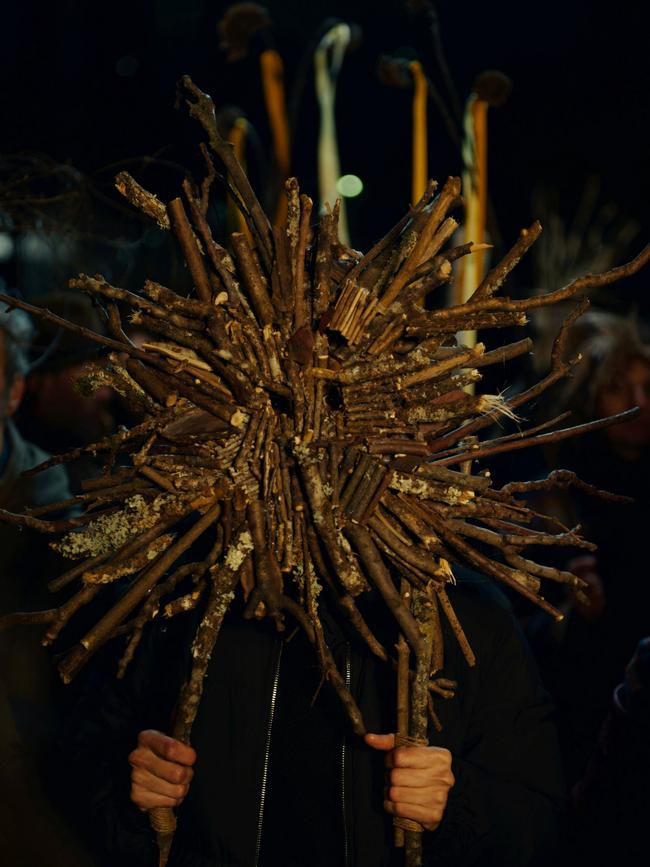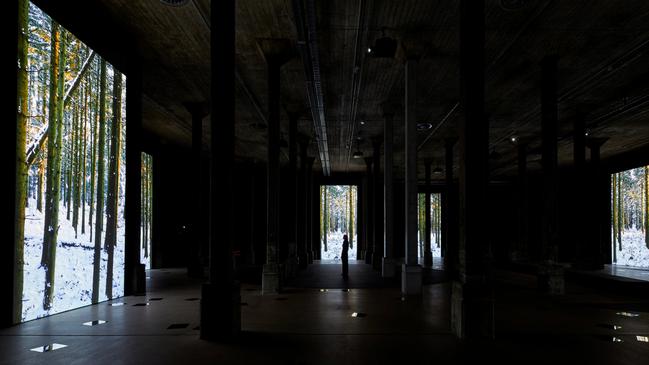Good art is not supposed to be angry
Part of the idiotic ideological undergrowth that chokes the Australian cultural world today is the idea that serious art should confront or offend audiences. Fortunately, this exhibition suggests otherwise.

As readers may recall, the Venice Biennale debacle was discussed at some length in this column on Saturday, March 1. The piece attracted an unprecedented response from readers, including comments on the paper’s website, discussion on social media, and even private messages from insiders who expressed support confidentially for fear of reprisals from the art establishment. In fact, the analysis in this column was the only one by a significant media company in Australia that did not simply parrot self-serving complaints about censorship, often made by people who had themselves done their best to censor Israeli participation in the last Biennale.
Of course it was appalling to announce a candidate for Venice and then withdraw the offer almost immediately. But it was never a matter of censorship; no one was proposing to limit the artist’s freedom to make his work. The question in this case was an entirely different one: the choice of an artist to represent our country at one of the world’s most prominent art events.
It is unthinkable for the state to choose an artist associated with one side of a violently divisive social issue; one only has to imagine the storm of outrage that would have erupted, in the present circumstances, if a Jewish artist had been selected. The trouble was that the choice of this year’s candidate was made by the Australia Council (aka Creative Australia) without proper consideration of his record, and had to be reversed as soon as the truth about him was exposed.
The Venice affair thus revealed much more fundamental problems with arts funding in Australia. It was shameful because it showed up the weakness and incompetence of a board that appeared to be too lazy to do its own homework and easily manipulated and misled by ideologically motivated staff. It exposed – despite claims about “rigorous process” – the utter lack of transparency and accountability in the formation of peer assessment committees.
The Australia Council has always suffered from problems, but the situation has become far worse in the age of ethnic factionalism and identity politics. The problem, indeed, extends far beyond the Australia Council: it’s probably clear enough to anyone who takes the trouble to look that you are unlikely to win any cultural prize or award in Australia today – whether in the fields of art, literature or anything else – unless you tick one or more approved identity boxes.
Beyond these considerations, though, the recent controversy raised a more perennial question about the nature and role of art in society. I was struck by the way that several interlocutors on social media – even after more or less admitting the general principles outlined above – would take up a final line of defence claiming that art is surely meant to be “challenging”, disturbing or shocking, to express anger and outrage, to confront and even offend audiences. Some seemed to believe that the ultimate criterion of seriousness in art was to be affronting or to express anger.

The first thing to observe about this line of argument is that outrage is always selective. In 2017, when the cartoonist Bill Leak was being hounded over his 2016 cartoon that drew attention to social dereliction in remote Aboriginal communities, an artist of Aboriginal descent was holding an exhibition at the NGV titled The Right to Offend is Sacred. Obviously it was permissible to offend some groups but not others. It is the same as those writers’ festivals that claim to raise “dangerous ideas”, but where no one would dare to raise a truly dangerous or controversial proposal. And we’ve seen for years that shocking Christian sensibilities is applauded, but even mildly upsetting Muslims is “Islamophobia”.
But all that is just more of the idiotic ideological undergrowth that chokes the Australian cultural world today. There is a deeper and more philosophical question: is good art truly meant to confront viewers? Does serious art really express anger and outrage? Or is this just a myth that has been repeated so often, from high school teachers to academics and curators and journalists recycling press releases, that it bypasses critical reflection like any other shopworn cliche?
If we stop to think about it, we may be surprised to find it hard to name a single example of great art that expresses the spirit of anger.
Look at the corpus of classic Chinese art: nothing. Persian or Indian art: likewise. Ancient Greek art? The Laocoon expresses pain and suffering, but not anger.
Consider the great art of early modern Europe: even when anger is expressed in a narrative painting, the painting itself does not convey anger, but the contemplation of this and other passions. Similarly, the Iliad is partly about the anger of Achilles, but it is not written in anger, nor is it intended to evoke anger in the reader.

The one work that will probably come to mind as a counter-example is Picasso’s Guernica (1937). Surely this was motivated by his outrage at the bombing of a small Spanish town by the Nazi allies of General Franco? This was certainly the starting point of the work, but the painting itself is quite another matter: it is a meditation on violence and tragedy, gradually assembled, as we can see from the photographs taken at the time by Picasso’s mistress, Dora Maar, with a set of symbolic figures, including the horse in the centre and the bull on the left. And if the horse is the central image of tragic suffering, the bull – implicitly an agent of destruction but strangely aloof – is also a fundamental symbol of Spain, and a symbol of potency and energy with which Picasso particularly identified. This is, in other words, a work that transcends its particular occasion and can be experienced as complex and moving by viewers who are neither confronted by it nor roused to righteous indignation.
In the same way, returning to Homer, the Iliad could be considered an anti-war poem in its uncompromising representation of the pain and absurdity of warfare, but it also reveals the many and complex experiences of men in battle, from fear and exhaustion to exultation; from disillusionment to the spirit of self-sacrifice.
Anger would be trivial and pointless in the face of the
ineluctable fate that rules human affairs. Great art is not about passion but about awareness.
Angela Mesiti’s work, from her early video installation, The Calling, reviewed here on May 17, 2014, has always been concerned with human communication, mainly in ways other than straightforward verbal exchanges. The Calling was about the intriguing whistling languages used in parts of the Mediterranean, from the Balearic Islands to Turkey, in places where distance makes the use of speech impractical. Later works considered communication through music and dance, and non-verbal sound has always been an important means of establishing connections between minds and bodies.
Mesiti’s new installation, The Rites of When, touches on the fundamental question of humanity’s relation to the cycles of the seasons. This was already important for hunter and gatherer communities, but became central to human life after the Neolithic Revolution, and with the discovery of agriculture and the domestication of cereal crops. Determining the right time for ploughing, sowing and harvesting was crucial to success and even survival, and the movements of the constellations became a celestial calendar telling us the time for each of the endlessly repeated annual tasks of rural life.


This work, displayed across seven video screens in the Tank section of the Art Gallery of NSW’s new wing, begins with spectacular images of the starry night, apparently meant to represent the constellation of the Pleiades, although it would be hard to recognise this if we had not read it on the gallery website. This constellation, also known as the Seven Sisters, is mentioned in the Bible and Hesiod as well as both the Iliad and the Odyssey, and was a crucial marker of the passage of the seasons.
After the astronomical introduction, the screens – always moving and more or less synchronised or contrasting as the work unfolds – turn to aerial views of snow-covered forests, seen from directly overhead. These are gradually replaced with views into the forest, looking through rows of tree trunks struck by what is probably early morning sun. Then a couple of figures are glimpsed walking through the forest. Some of the screens go dark, others start to show what look like waving orange ribbons; as the camera zooms out, we discover faces and heads wearing crowns of straw and ribbons and other decorations.
We begin to realise that we are watching a kind of pagan or perhaps neo-pagan ritual, most likely a fertility ceremony held in midwinter, or in other words at the winter solstice, and intended to bring good fortune and fertility in the ensuing year. At first the figures seem to be walking in a procession, but then they begin to dance together, arms around each other’s shoulders. There is much stamping of feet on the ground, an age-old action intended to wake the earth from her slumber and urge her to come back to life after the depths of winter have been reached.

This section of the work ends in bonfires, again ancient winter rituals; and then there is another cosmic interlude with patterns suggesting the motions of the heavens, before, as we might expect, we reach the opposite moment in the annual cycle, the summer solstice, which coincides roughly with the ripening of the wheat crop, although the harvest itself is usually later.
Suddenly the screens are filled with yellow which we may immediately recognise as aerial footage again, this time of ripe fields of wheat. Then – in one of the most visually interesting sequences – we discover combine harvesters cutting the ripe wheat, again seen from directly above. A truck drives alongside the harvester and the cut grain is funnelled into it, already threshed by the same machine. The harvested field, stripped of wheat, is a duller hue; and then – perhaps the most visually striking passage of all – the screens turn to the burning of the stubble, starting from the top of the screen and working its way down, producing clouds of smoke as it goes.
The harvest is followed by a slightly desultory dance sequence and then another ceremony, which begins with clicking fingers, few and slowly at first, then more and more intensely, and figures clapping hands. The clapping rises to a crescendo, and then the figures dissolve into strobing light effects, evoking a final ecstatic consummation of summer and harvest before the inevitable return to the cycle which still sustains our life on this planet.
Angelica Mesiti: The Rites of When, Art Gallery of NSW to May 11.







To join the conversation, please log in. Don't have an account? Register
Join the conversation, you are commenting as Logout